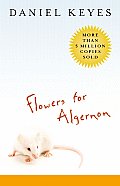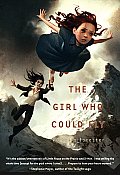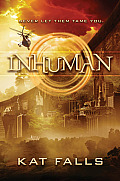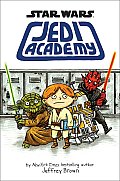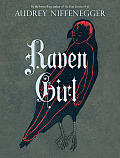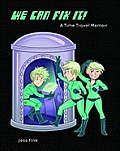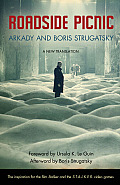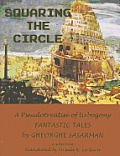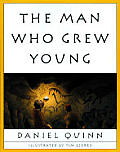Link to this review in the form of a comic strip by billba tagged classic • science fiction • coming of age
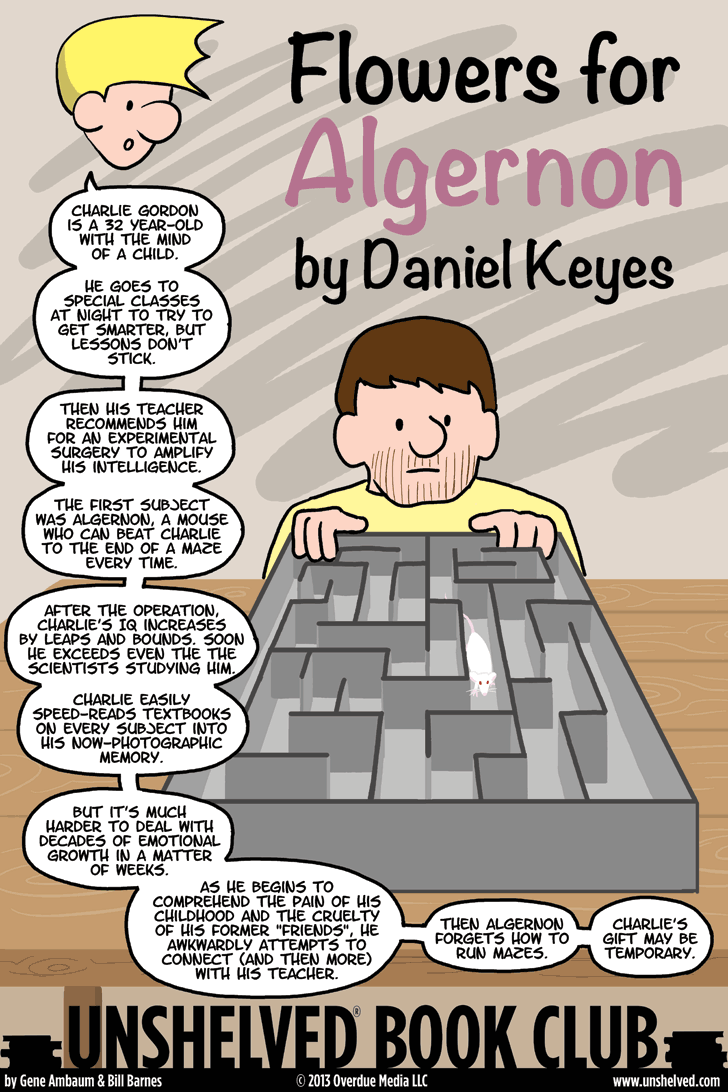
Click for the full-sized comic
Why I Picked It Up: As a “gifted” youngster I read this classic piece of science fiction over and over because I identified with Charlie’s loneliness. Then last week I watched an episode of Brooklyn Nine-Nine which featured a cameo by a mouse named Algernon, and it all came rushing back to me.
Why I Finished It: As a not-nearly-so-gifted adult I identified with Charlie’s efforts to understand his life. Like Charlie, I experience forgotten events from the past coming into sharp focus, often with a rush of feelings that it wasn’t safe to experience the first time around. When it comes to growing up, it’s better late than never.
Readalikes: For a character with an equally unusual (but very different) perspective on relating to his family and the world, try Stuck in Neutral by Terry Trueman.
@bookblurb A 32 year-old with the mind of a child undergoes experimental surgery to amplify his intelligence.
Link to this review by gigi tagged science fiction • coming of age
Piper McCloud has been able to fly since she was a baby. But her parents never allowed her to tell anyone about her power. One day the secret slips out at a picnic when she flies up to catch a baseball. Everyone is mean to her because she’s different. (They were kind of mean to her before that, too.) Then Doctor Hellion visits her house and offers to take her to a school for special kids, and she goes. Other students there have powers like telekinesis, super strength, and one can even create weather.
But when one of Piper’s friends comes out of the school nurse’s office, it becomes clear that something strange is going on — her friend has forgotten that she ever had a super power and who her friends are.
Why I picked it up: The tooth fairy brought it in exchange for one of my lower lateral incisors.
Why I finished it: I loved the school. It’s underground at a secret place that is full of things that are weird and mutated. There’s a silver giraffe, plants that try to bite people, and a human-sized insect.
It’s perfect for: Gian because she would like Sebastian the cricket. Like the children he has a special power — he can sing in English.
@bookblurb After Piper reveals she can fly, she’s sent to a school for kids with powers.
Link to this review by flemtastic tagged coming of age • science fiction
When experimental animal DNA viruses escaped from a lab, everyone east of the Mississippi was infected and became violent, half-animal hybrids. This is the Feral Zone. Now the uninfected cower behind giant walls. Getting caught traveling into the zone will get you the death penalty, and if you’re scratched by a feral manimal your DNA will become corrupt, you’ll go wild, and then you’ll die.
Lane’s world is turned upside down when she hears her father, a quiet man, is actually a fetch — someone who goes out into the Feral Zone to retrieve objects for the rich. After he goes missing she is forced to venture into the wilds to find him. What she discovers beyond the boundary walls is much, much worse than what the government has said. To survive she needs to avoid contracting animal DNA and to steer clear of the cruel manimal who rules the wastelands.
Why I picked it up: At a publisher-sponsored dinner I heard that there was a chimpacabra in the book, a monkeyman that digs pits and tunnels and bites its victims to paralyze them. That was enough to hook me.
Why I finished it: The people of the Feral Zone are realistic and well-developed, as demonstrated by the first town Lane visits outside the wall. The people there have all been infected and show visible genetic mutations because of their blended DNA, but they function as a town watch and are raising children. It also doesn’t hurt that the bad guy is a sadistic, mentally-unbalanced manimal who runs a city through fear and cruelty. This evil manimal wants to regain his humanity by receiving an infusion of pure, untainted human blood.
It’s perfect for: Lily, my niece, who would like the touch of romance that blooms even in the arid, dangerous wastelands between Lane and her capable but dangerous guide as well as the Feral Zone’s clever animal-human hybrids, including a tiger-man.
@bookblurb Lane has to find her missing father beyond the walls in the Feral Zone.
Link to this review by geneambaum tagged science fiction • graphic novel • coming of age • humor
Roan Novachez just finished elementary school and wants to attend Pilot Academy with his friends, just like his older brother. Unlike nearly all other applicants, though, he’s rejected. He’s worried that he’s going to have to go to Tatooine’s Agricultural Academy, but then he’s invited to attend Jedi Academy on far off Coruscant.
At the academy, he finds a mix of kids who’ve already been studying to be Jedi for years. Most are friendly, but a few are complete jerks. Roan’s journal tells the story of his first year at his new school as he tries to fit in, practices with his lightsaber, and struggles to learn to use the Force.
Why I picked it up: I’ve loved Jeffrey Brown’s work for years, and I’m a huge Star Wars nerd.
Why I finished it: Yoda is the only faculty member at the Jedi Academy who was in the movies. It was hilarious to see him from a middle schooler’s perspective — his backwards talking is incomprehensible, he has lots of ear hair, and he’s always laughing. Roan thinks he may be a bit senile. And I loved that Librarian Lackbar was a Mon Calamari and that the Wookiee PE teacher, Kitmum, wears a headband.
It’s perfect for: Dash, who likes camping, because Roan goes on a field trip to the planet, Kashyyyk, which has dangerous animals and a campfire story about a ghost Wookiee.
@bookblurb Roan’s diary tells of his first year at Coruscant’s Jedi Academy. His teachers include a strange green guy, Yoda.
Link to this review by emilyreads tagged graphic novel • fantasy
Once upon a time there was a lonely postman and a young raven who had fallen out of her nest. Out of their unlikely romance comes Raven Girl, a human child who yearns to fly like the bird she knows she is inside. A chance encounter with a questionable surgeon offers Raven Girl the opportunity to gain wings, but the procedure is not without complications.
This original fairy tale by the author of The Time Traveler’s Wife is lyrical and strange, yet ultimately hopeful.
Why I picked it up: It looked like a picture book, but it was on the new adult nonfiction shelf (398.2, fairy tales) at my library. I was curious.
Why I finished it: Niffenegger’s narrative is brisk and unsentimental, and pulled me along even as my logical mind was interjecting, “Whuh? No! Huh?”
It’s perfect for: My almost-seven-year-old son. Like the Greek myths he’s currently obsessed with, the story has gruesome, romantic, and heroic elements.
@bookblurb A postman falls in love with a raven who falls from her nest. Their child is a girl who longs to fly.
Link to this review by snow tagged coming of age • graphic novel • nonfiction
Who doesn’t want to change the stupid things they did in the past, like making out with the wrong guy, having a bad drug trip, or getting caught up in horrible family drama? Fink, with a little help from a time machine — and an awesome jumpsuit — decides to fix her past mistakes, but quickly learns that there’s no way to avoid the bad things in life. Luckily, there are plenty of good things that she had forgotten over the years and has a chance to see them again.
Why I picked it up: I love Fink’s wordless, erotic (NSFW), steampunk, webcomic Chester 5000 XYV, which is also a book.
Why I finished it: Fink’s adventures start off silly and fun, but they quickly become contemplative. She doesn’t flinch from her past, turning an equally astute eye on ridiculous experiences, like giving a bad blowjob, and serious ones, such as dealing with an insane father. But Fink is a natural comedian, so she uses the dramatic moments to give her comedic ones extra oomph. The result reminded me that, even though I may only remember cringe-worthy moments, there have been plenty of good times in my life, too.
Much of the strength of Fink’s work lies in her fun art, which uses plenty of shades of grey to add depth to her cartoony images. She’s an emotional artist and that makes her scenes pop, whether she’s being funny, sad, or illustrating smut. And the time travel element is nicely handled; Fink uses varying hairstyles, as well as the movie titles outside theaters where she worked in her younger days, to keep readers clear on when the current scene is taking place. I was never once confused about the setting, an impressive feat for a time travel story.
It’s perfect for: My husband Barry. He knows I wish that I’d done things differently in my past, but that I wouldn’t change a thing because those choices led to us meeting.
@bookblurb When Fink tries to use a time machine to fix her past she discovers plenty of good moments she’d forgotten.
Link to this review by geneambaum tagged literary • science fiction
Thirteen years ago, aliens landed on our planet in six Visit Zones. They departed quickly, leaving behind pieces of advanced technology that many believe will change the course of human civilization. The International Institute of Extraterrestrial Cultures tries to make sure no one but its scientists can get access to these Zones. Desperate men known as stalkers sneak in and smuggle out what they find.
Why I picked it up: Forward by Ursula K. Le Guin! Plus it’s a Russian science fiction novel originally published in 1972, and I hadn’t read any of those before.
Why I finished it: Redrick Schuhart has lived in the town of Harmont, the site of one of the Visit Zones, his entire life. He’s a former stalker who’s done time for that crime, now working as a lab assistant at the Harmont branch of the IIEC. As he leads his colleagues into the Zone, at first it seems that nothing is out of the ordinary. The Zone appears to be just an industrial landscape. But the reasons for Schuhart’s nervousness and dread at entering the Zone soon become apparent. There are vibrations in the air, as if a volume of high heat is moving across the landscape. Deposits of deadly hell slime lurk in basements. Anything might be deadly. Schuhart’s observations and superstitions keep him alive. His colleagues are not so lucky.
The reasons for the alien visit and the things they left behind are inexplicable and remain so throughout the book, a stark contrast to most science fiction with long expository lumps. (The book is filled with characters drinking, as if they can’t deal with the uncertainty.)
It’s perfect for: Vicki. I think Schuhart’s love for his girlfriend, Guta, will pull her into the book. When Guta tells Schuhart that she’s pregnant, she fears what he’ll say. Stalkers’ kids are often altered by a parent’s time in the Zone. But Schuhart loves Guta, and they do their best to raise their daughter, who is called Monkey for good reason.
@bookblurb Aliens abandoned advanced, incomprehensible technology on Earth. Desperate men try to retrieve it.
Link to this review by wally tagged science fiction • fantasy • literary • short stories
These twenty-four very short stories, fables, and parables tell of cities in ruins, waiting to be discovered, or not yet built.
Why I picked it up: I’ll read just about anything Ursula Le Guin is involved with (she translated it from Spanish, though it was originally written in Romanian), and I really like discovering foreign authors.
Why I finished it: Each of the stories is a gem, whether it describes a city with geometrical precision or advances a philosophical idea. Before anyone can build Selenia, the first city on the moon, they must clear the moon of pollution, including all the projections from human poets, lovers, and lunatics.
It’s perfect for: Scott, who would appreciate Sasarman’s background in theoretical architecture, and would also like trying to figure out why Communist censors cut many of these stories from the Romanian original.
@bookblurb Short stories and fables about amazing, impossible, unreal cities.
Link to this review by billba tagged science fiction • graphic novel • fantasy
The sun rises in the west and sets in the east. Technology gets simpler and the ozone layer gets thicker. People die, they live, they’re born. This is how the universe works except for Adam Taylor, who never seems to get any younger, a witness to the inexorable backward passage of time who wants to find out where he will have come from. (Don’t judge me — you try writing this review without mangling a tense or two.)
Why I picked it up: It’s a hell of a pitch, and I was frankly skeptical that the author could make it work. But it was the only graphic novel in the small bookstore I found myself in a dozen years ago.
Why I finished it: It does work, and it’s immensely beautiful and downright poetic at times. It helps that it never goes near the subject of reverse pooping. After a while I became convinced that we’re the ones who do it wrong, especially when all the white men, having accomplished their task of cleaning up the New World, finally return to Europe leaving only the native peoples behind.
It’s perfect for: Anyone who enjoyed Jerome Bixby’s The Man From Earth which also wrestles with high-concept ideas with both intellectual flair and emotional depth.
@bookblurb The sun rises in the West and sets in the East. People die, live, and are born except Adam, who never gets younger.
